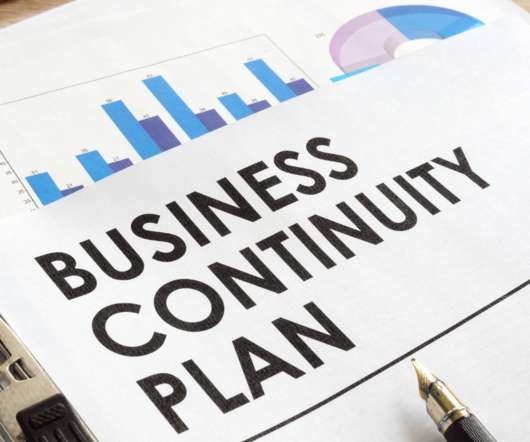BCM Basics: the Difference Between Business Continuity and Disaster Recovery
MHA Consulting
OCTOBER 5, 2023
This post is part of BCM Basics, a series of occasional, entry-level blogs on some of the key concepts in business continuity management. For business continuity newcomers, few topics are as confusing as the difference between business continuity and IT disaster recovery. Let’s go over them.






















Let's personalize your content